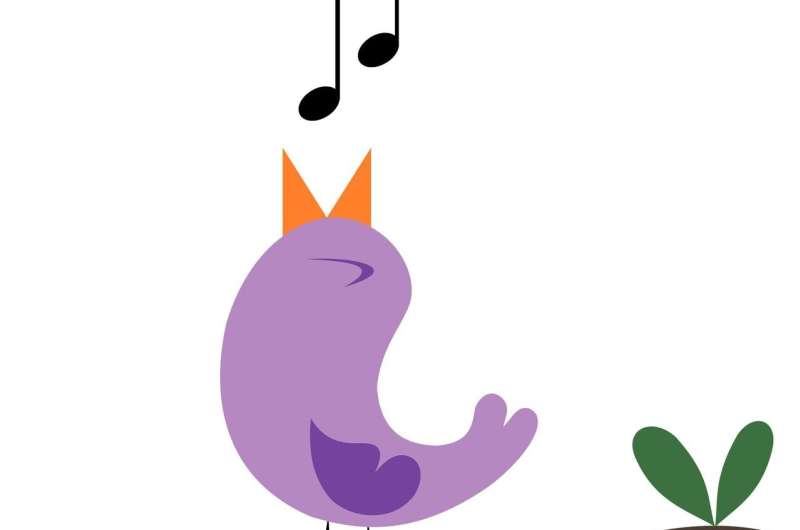Researchers suggest that complex bird songs might require large populations

Growing up in a small community has its advantages, but if you want to learn from world experts, you may have better luck in a big city. This is the case in the world of birds as well. Large populations of birds might be better able to maintain complex songs than small populations—all because of access to high-quality tutors.
Two researchers associated with the Evolutionary Studies Initiative, postdoctoral researcher Emily Hudson and assistant professor of Biological Sciences Nicole Creanza, published their findings in the journal Evolution.
According to Hudson, "we hypothesized that a simple song can be maintained in a population of any size, whereas a complex song might only be maintained in a large population."
For example, the Golden-crowned sparrow seen in the video embedded below has a simpler song than some of the same species from larger populations. This individual lacks a rapid trill at the end—as heard in the sounds embedded at the bottom of this story.
Birds in large populations may have access to better tutors than those in small populations. Therefore, we would expect songs in smaller populations to have less complexity. This use of tutors mirrors how humans learn to make and use tools. The mathematical model that Hudson and Creanza built is based on the longstanding hypothesis that larger populations of humans might make more technological advances.
According to Creanza, "it is tempting to draw parallels between bird's songs and human music or language. However, a bird's song is more than just beautiful music."
Hudson continued, "a young bird often learns his songs from someone other than his father, particularly if his father sings a poor song. This is more like how humans learn to make tools—by finding someone who is good at making something and trying to copy them—than how humans learn language."
This work builds off previous research in the Creanza lab exploring the role of mate choice in song evolution. The lab found that female bird preferences can drive the evolution of male song learning behavior. This work extends the previous results by showing a way that complexity could diminish in spite of female choice.
"This mirrors the way that this type of model was originally used in human cultural evolution: to show why seemingly advantageous technologies disappeared from the archaeological record in some groups of people," explained Creanza.
The pair of researchers are really excited about the future directions of this work.
"We believe our model also provides a potential null hypothesis for evolutionary biologists—an expectation for how behaviors might change over time, even in the absence of changes in selection pressures," said Hudson.
The next step for the lab will be to test real data against the model.
According to Creanza, "looking through and quantifying large datasets of bird songs is another specialty of our lab, and we are excited to test our predictions in real bird populations."
More information: Emily J. Hudson et al, Modeling how population size drives the evolution of birdsong, a functional cultural trait, Evolution (2022). DOI: 10.1111/evo.14489
Journal information: Evolution
Provided by Vanderbilt University





















